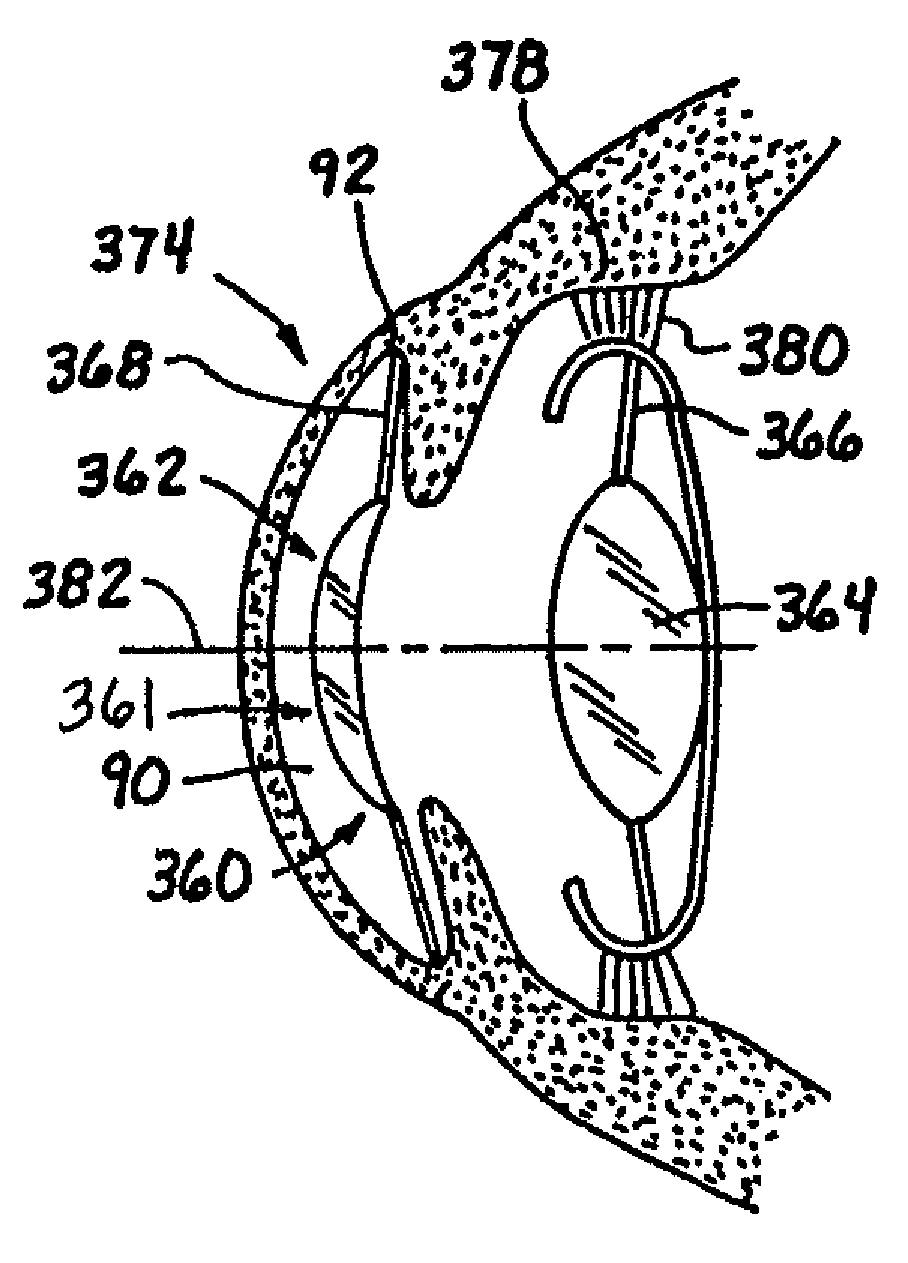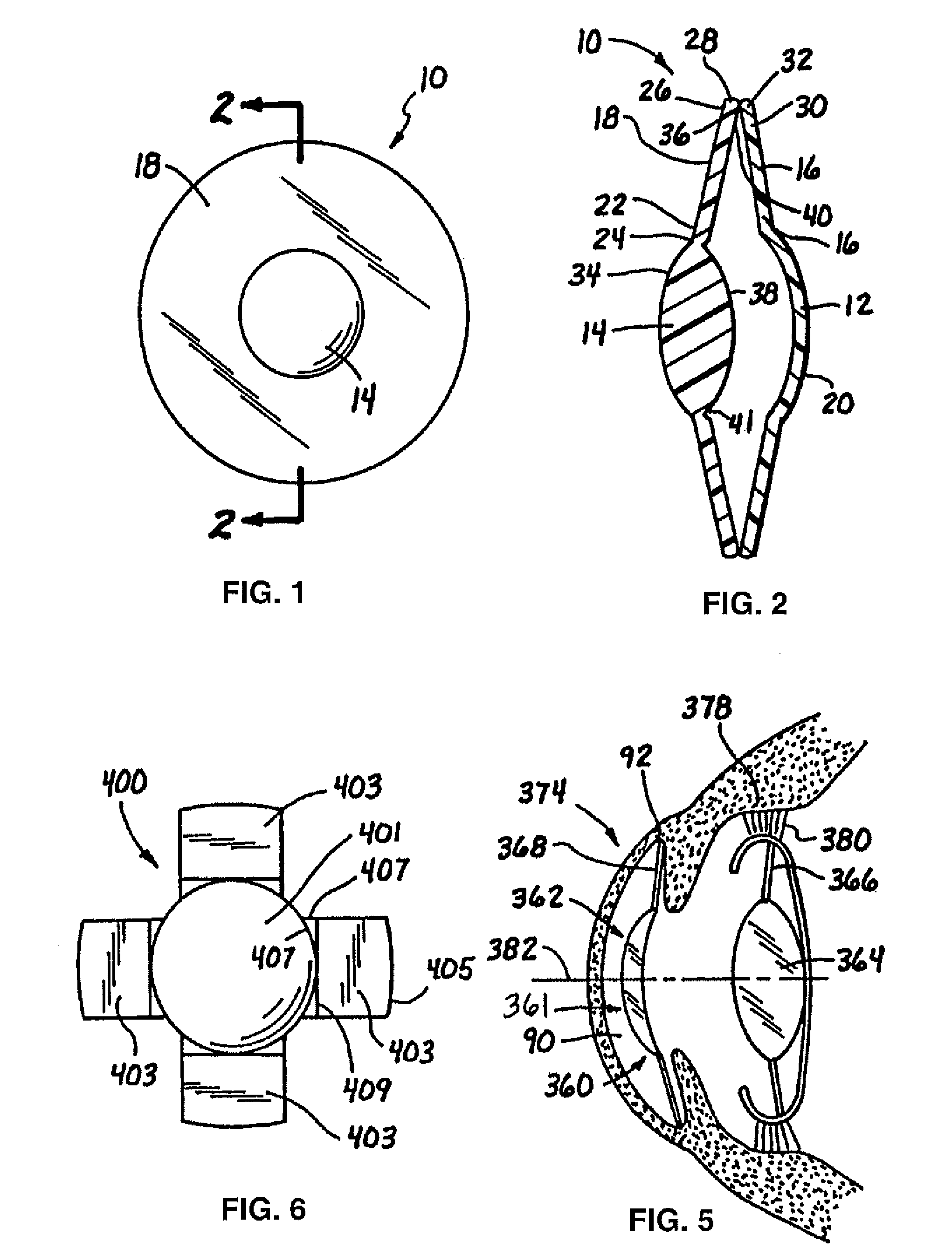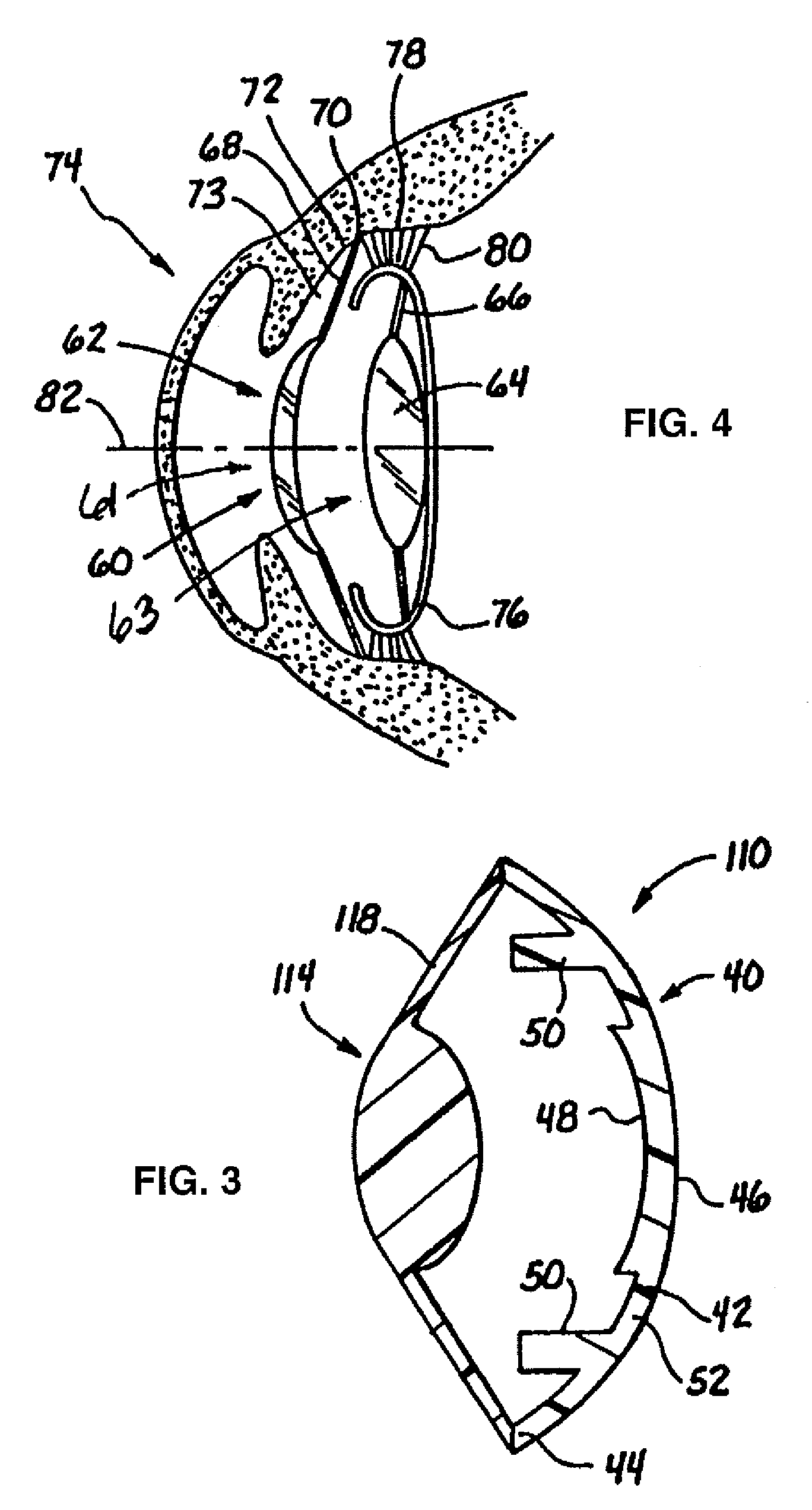Ophthalmic lens combinations
- Summary
- Abstract
- Description
- Claims
- Application Information
AI Technical Summary
Benefits of technology
Problems solved by technology
Method used
Image
Examples
Example
DETAILED DESCRIPTION OF THE DRAWINGS
[0056] Referring now to FIGS. 1 and 2, an ILC according to the present invention, shown generally at 10, includes a first optic or optic body 12, a second optic or optic body 14, a disc type fixation member 16 and a disc type movement assembly 18. As used herein, the term “optic” or “optic body” means an optical element that may be used alone or as part of an optical system to produce an image on the retina the eye of a subject. The terms “optic” and “optic body” are used somewhat interchangeable, with the term “optic” emphasizing more the optical characteristics of an optical element and “optic body” referring more to the use an optical element as part of an intraocular lens that may also include, for example, a base element, a movement assembly, or one or more haptics, fixation members, and / or movement members. An optic or optic body may have an optic power to converge or diverge incident light using the principles of refraction, diffraction, a...
PUM
 Login to View More
Login to View More Abstract
Description
Claims
Application Information
 Login to View More
Login to View More - R&D
- Intellectual Property
- Life Sciences
- Materials
- Tech Scout
- Unparalleled Data Quality
- Higher Quality Content
- 60% Fewer Hallucinations
Browse by: Latest US Patents, China's latest patents, Technical Efficacy Thesaurus, Application Domain, Technology Topic, Popular Technical Reports.
© 2025 PatSnap. All rights reserved.Legal|Privacy policy|Modern Slavery Act Transparency Statement|Sitemap|About US| Contact US: help@patsnap.com



